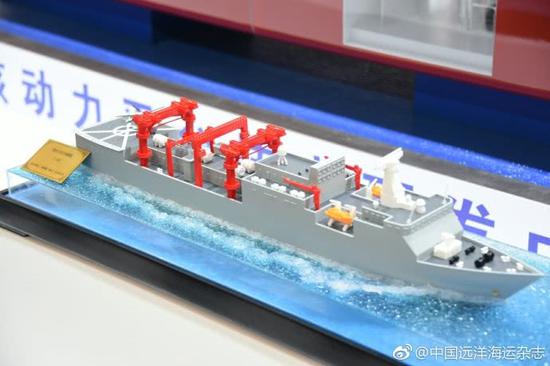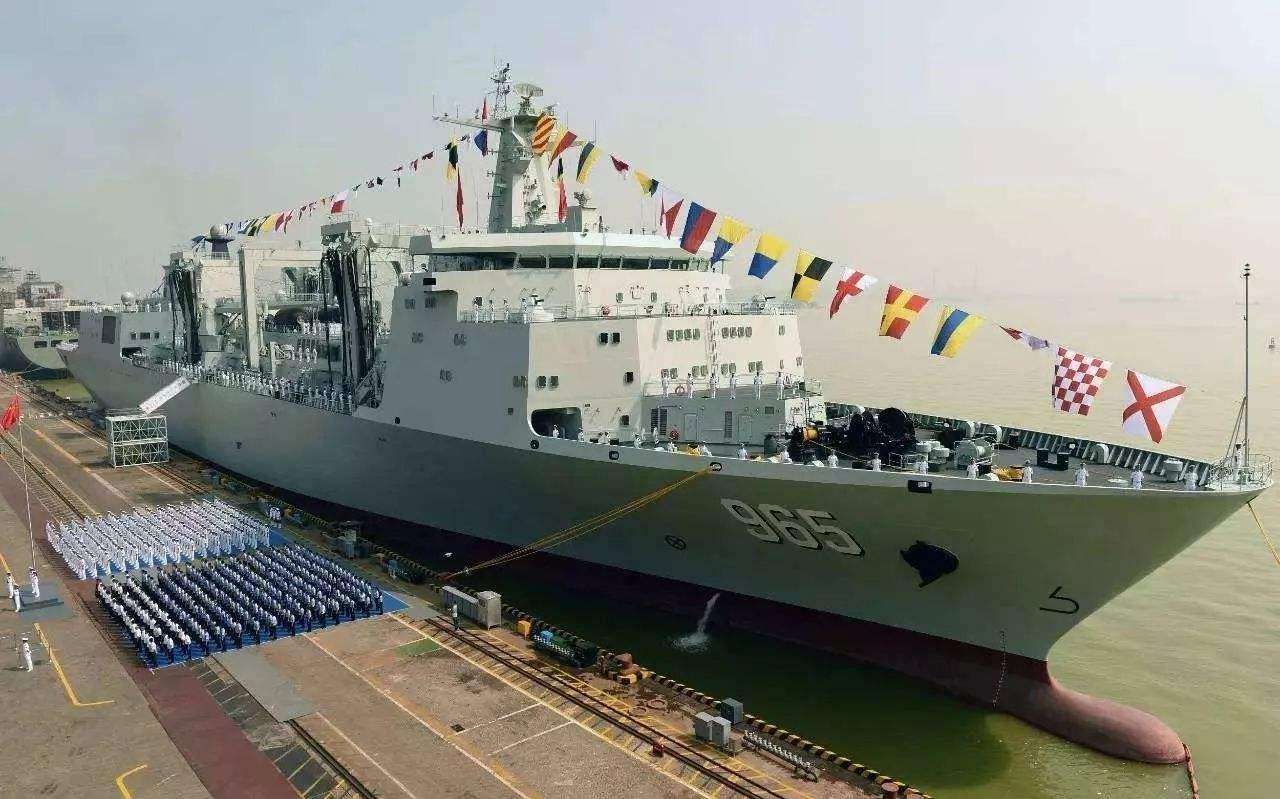
On September 6, 2018, China’s comprehensive supply ship Hongzehu (Hull 881) was honorably retired, marking that the Chinese Navy has entered a new era of modernization. With its retirement, perhaps the country’s next-generation supply ships have been already under construction.
On September 5, the No.719 Research Institute of China Shipbuilding Industry Corporation (CSIC) unveiled a model of a nuclear-powered comprehensive supply ship based on the marine nuclear-powered platform demonstration project.
This ship aims to meet the demand of escorting large ocean-going fleet, so as to enhance the fleet’s maritime control and combat capacities. Perhaps this means China’s next-generation supply ships, nicknamed “nannies for aircraft carriers”, will be fueled with nuclear power.
As a matter of fact, the United States and Russia have both accumulated plentiful experience in building nuclear-powered surface ships. Since the period of the Soviet Union, Russia has been engaged in the building of nuclear-powered vessels, including icebreakers and cruisers. The United States has also built many nuclear-powered aircraft carriers, leading the world in terms of the R&D capacity of nuclear-powered surfaceships. However, neither of the two countries has ever put forth the plan to build large-scale nuclear-powered supply ships.
Of course, one reason why the United States doesn’t equip nuclear-powered supply ships for its aircraft carriers is that its multiple overseas military bases around the world are already enough to meet their demand. In view that China has no overseas military base, it needs nuclear-powered supply ships to support its future nuclear-powered carrier battle groups. If China’s next-generation supply ship is nuclear-powered as expected, it will be the first of its kind in the world.
The nuclear-powered comprehensive supply ship is a never-before-seen concept in the world. China is the first country to put forward the idea of building nuclear-powered supply ships. This indicates that China has begun exploring its own path of naval development.
For a long time, the Navy of the Chinese People’s Liberation Army (PLA) had followed the pace of the US Navy in terms of equipment development. However, with the constant improvement of its technological capacity, China now can basically build any naval ship it needs. In this context, the Chinese Navy has been committed to blazing a new path for its independent development, marking a huge leap forward on the road of its modernization.
In addition, in terms of ship design, the Chinese Navy has transitioned from “the realm of necessity” to “the realm of freedom”, namely, from a period when it could only use what it could build to an era in which it is able to build anything it wants.
Currently, China’s biggest comprehensive supply ship is the Type-901 combat support ship for the aircraft carrier. Its huge hull and fast speed make it able to meet the demand of a carrier battle group. However, the Type-901 supply ship is designed to serve conventionally-powered aircraft carriers.
In future, perhaps the Chinese Navy will be equipped with a large amount of nuclear-powered ships. China’s nuclear-powered aircraft carriers that will definitely be built will need nuclear-powered supply ships. Nuclear-powered supply ships have many advantages, of which the most direct is that they needn’t carry fuel for its own use, so they can bring more supplies and equipment, further enhancing the support efficiency.
It is expected that in the near future, China will have a naval fleet comprised of various types of nuclear-powered ships, ranging from nuclear-powered aircraft carriers, large nuclear-powered destroyers, and nuclear-powered submarines to nuclear-powered supply ships.










